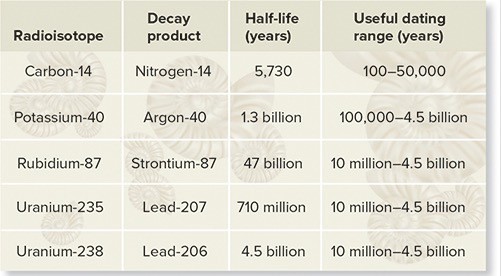 A scientist found an unweathered igneous rock that contained 0.025 g of potassium-40 and 0.075 g of argon-40. The half-life of potassium-40 is 1.3 billion years. Using the table from Figure 26.3 the age of the rock would be estimated to be
A scientist found an unweathered igneous rock that contained 0.025 g of potassium-40 and 0.075 g of argon-40. The half-life of potassium-40 is 1.3 billion years. Using the table from Figure 26.3 the age of the rock would be estimated to be
A. 1.3 billion years old.
B. 2.6 billion years old.
C. 0.050 billion years old.
D. 0.001875 billion years old.
E. 1.69 billion years old.
Answer: B
You might also like to view...
The Archaea generally lack which of the following that are normally found in Gram-negative bacteria?
A. Lipopolysaccharide B. A complex peptidoglycan network C. Outer membrane D. All of the choices are correct.
The fast block to polyspermy involves the:a
release of inhibitors of acrosomal enzymes. b. synthesis of a new sperm-resistant membrane. c. accumulation of calcium ions in the acrosome. d. opening of ion channels that change the polarity of the egg membrane. e. destruction of excess bindin receptors on the sperm.
Which arthropod subgroup includes those with six legs?
A) Arachnids B) Crustaceans C) Insects D) All of the above
Dr. Askins performs an electrophysiology experiment. She records a neuron firing an action potential. What voltage
does she record during each action potential spike? a. -70 mV b. -55 mV c. +35 mV
d. +55 mV e. +70 mV